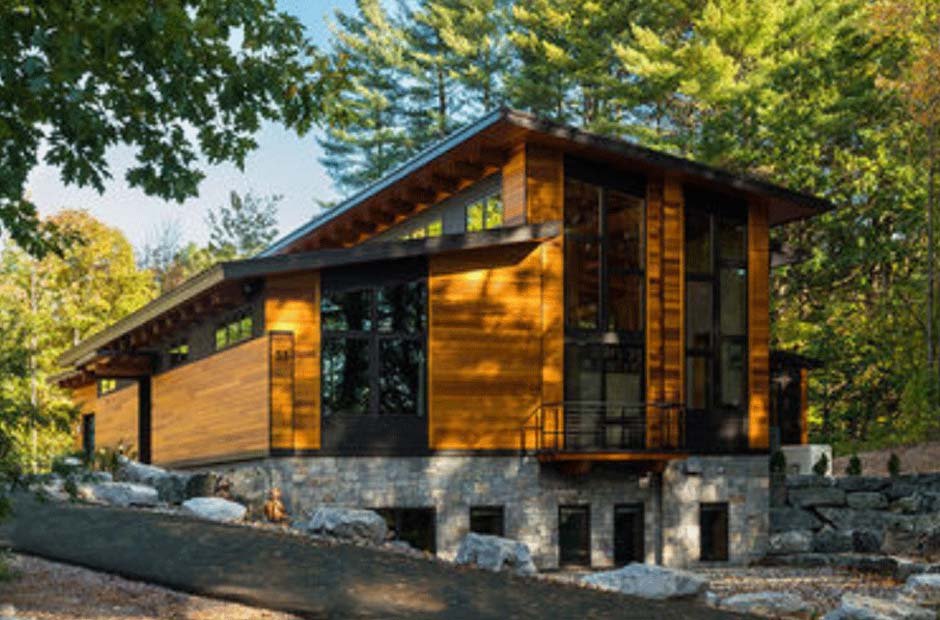Beautifully crafted and aesthetically appealing timber frame homes are popular in US real estate. Over 75% of low-rise buildings utilize timber frame technology. Mainstream home builders are recognizing the advantages of accessible timber frame homes. The principle of timber frame homes involves large wood beams and posts as structural support. The best part about timber frame homes is that there is no need for interior load-bearing walls. A timber frame home needs less wood than a traditional wood frame building. Moreover, the wood pieces are larger and more expensive.
Excellent Thermal Insulation
With low thermal mass, there is a reduction in heat absorption. It means that homes warm faster during winter, according to KRS Holdings Management. There is no need to heat the home continuously and less heat escapes through the walls. However, during the summer, the interior of a timber frame home remains cold as external heat doesn’t get in. It cuts the energy bills because homeowners don’t use air conditioners, fans, or room heaters. Energy efficiency makes timber frame homes a preferable choice.
Good Sound Insulation
One of the highlights of accessible timber frame homes is their sound insulation. Timber is a natural insulator that adds comfort and warmth while controlling and dampening sound. Timber fiber panels replace traditional insulation made from fossil fuels. It aids in significant noise or sound reduction, and the interior timber finishes, cladding, and slats further improve the acoustics of rooms. In timber frame buildings, there is insulation in internal walls, external walls, ceilings, and floors. It enhances the soundproofing and thermal efficiency of the entire home.
Design Flexibility
Timber frame homes are ideal for architects because of their design flexibility. Architects easily incorporate architectural features and treatments, like open floor plans via steel integrations. The highlight of timber homes is the custom-made, innovative interiors and designs for individual projects and facilitating cost-effective solutions. The flexibility in floor plans makes timber construction versatile and innovative in the construction industry. They make excellent choices for apartments, multi-family buildings, independent homes, penthouses, and different types of floor plans.
Faster Building Process
Home developers realize that timber frame technology quickens the home building process. It also offers predictable and stable building programs. Considering timber frame construction, the time taken to establish a home is reduced by more than 30% or more compared to masonry home systems. Irrespective of external weather conditions, the home-building programs are predictable. A quicker building process is profitable as home builders can work on multiple projects in a short tenure. Moreover, homeowners prefer the construction of their homes to finish as early as possible. Furthermore, timber buildings, when designed with guidance from an i beam size chart, are lightweight, achieving almost a 55% reduction in weight compared to conventional construction materials.
Environmental Benefits
Timber is a sustainable construction material with a lower carbon footprint. Because it is non-toxic, organic, and naturally renewable, accessible timber frame homes are making their niche in mainstream home constructions. The best part of timber frame homes is that their benefits last for decades as homeowners enjoy energy-efficient and modern homes. Whether an individual resides in warmer or colder regions, timber frame homes mitigate extreme weather conditions and climate changes. The timber frame panels are recyclable, which promotes waste reduction in the entire home-building project.
Highly Cost-Effective
Timber frame buildings assure faster construction, reducing on-site manual labor. There are cash-flow benefits by planning and implementing the optimal use of timber frames. The pre-fabricated timber panels deliver high-quality control, which helps to keep the construction expenses down. Less raw materials, lower site and office overheads, better productivity, and reduced labor save time and money. Better building quality results in lower repair and maintenance costs and higher satisfaction.
Conclusion
The growing market for accessible timber frame homes ensures the popularity of the building technique. It accounts for almost 755 of new home construction in the USA. Timber frame homes have been on the market for a long time, but recently they have been getting recognition among architects, home builders, developers, and engineers. The benefits of timber frame homes are widely appreciated, following the increasing demands of energy-efficient building regulations. Building technology is the most efficient and economical construction method. Offering excellent quality control, design flexibility, and streamlined production guarantees better energy efficiency when compared with masonry home construction.


